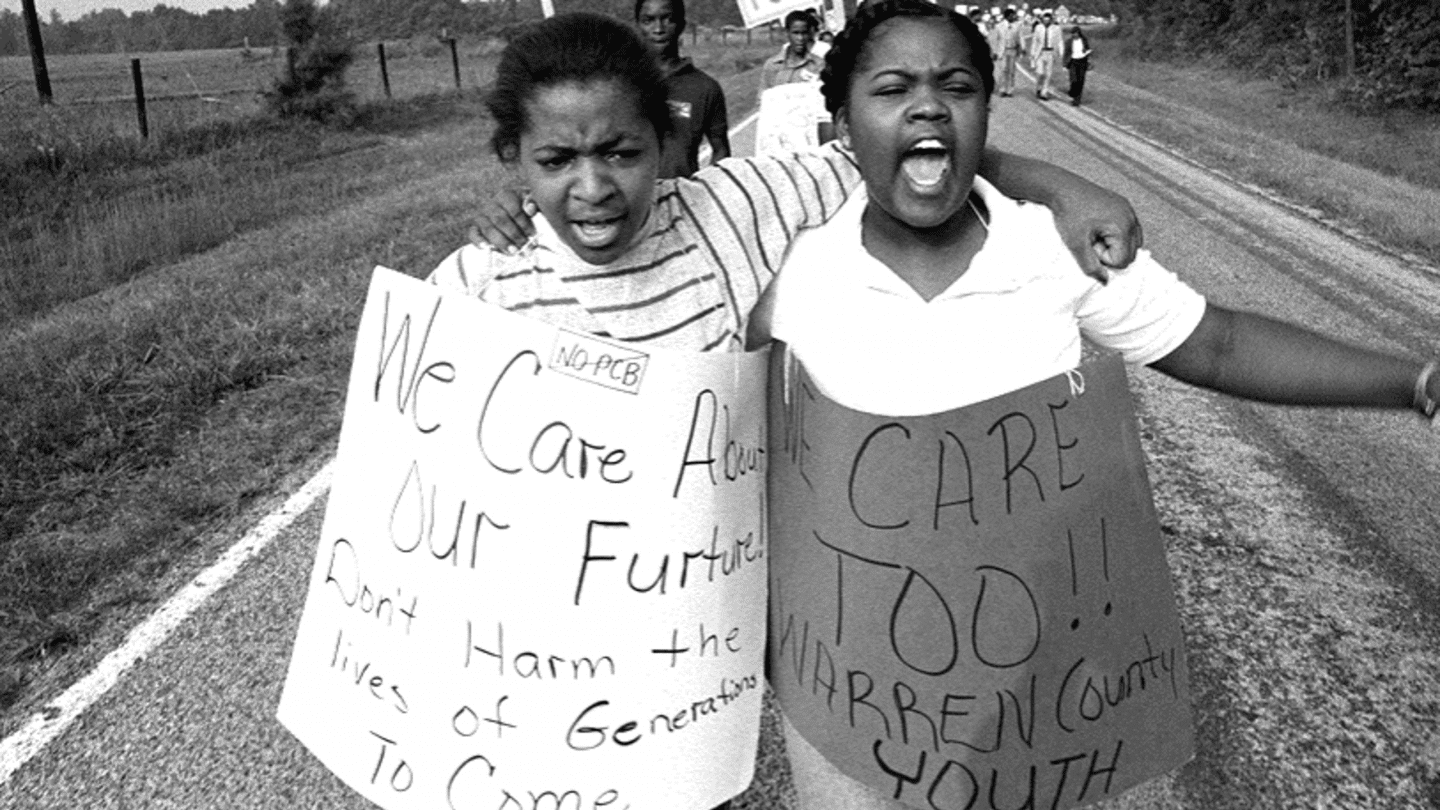March 2, 2020
What is environmental justice? What has been done to advance it? And how can transportation planners factor it into projects?
Think of the water crisis in Flint, Michigan, in which inadequate water treatment and testing resulted in a series of major water quality and health issues for Flint residents as contaminated water from the Flint River was piped into homes for more than a year.
The unfortunate reality is there are countless communities across the nation whose stories are not in the public eye, yet who unfairly and often experience effects of extreme pollution and other environmental hazards.


The Emergence of Environmental Justice (EJ)
While commonly confused with environmental preservation or conservation, the concept of environmental justice emerged in the 1980’s as a component of the Civil Rights Restoration Act as people of color sought the opportunity to address inequity and environmental protection issues in their communities.
A high concentration of polluters in some communities mean the people who live there – who are generally low-income, minority, rural and tribal populations – experience disproportionate exposure to harmful elements that negatively impact their health, living environment, and general life functions. Strokes, lung cancer, heart disease, breathing problems, and the worsening of other health problems are just a few of the many health effects of these harmful environments.
The common subgroup of low-income communities often overlaps with the subgroups of minorities, rural and tribal populations, creating duality in way these populations are impacted.
Environmental justice is a strategy that focuses on identifying and addressing disproportionately high and adverse effects of programs, policies and activities on minority populations and low-income populations to achieve an equitable distribution of benefits and burdens.
There are two key statutes at work in environmental justice efforts:
- NEPA stands for the National Environmental Policy Act of 1969. On January 1, 1970, NEPA was signed into law to promote efforts to prevent or eliminate damage to the environment and stimulate the health and welfare of people. Since that time, more than 100 nations have enacted national environmental policies that were modeled after NEPA.
- Title VI is a component of the Civil Rights Act of 1964 that specifically focuses on non-discrimination issues. It’s establishing that no person in the United States should be excluded from participation in, denied the benefits of, or be subjected to discrimination under any program or activity receiving financial assistance.
To understand if NEPA and Title VI are adequately providing environmental justice to affected communities, let’s walk through history.
The History of Environmental Justice
1960’s – The Civil Rights Act of 1964 passed, specifically citing the Title VI components that address environmental justice issues.
1970’s – The US Public Health Service acknowledged inequality as it related to lead poisoning, specifically in African American and Hispanic communities.
1980’s – Environmental justice was brought to a national spotlight when residents in Warren County, North Carolina protested the construction of a hazardous waste landfill in a predominantly African-American neighborhood. During the 1980s, the United Church of Christ Commission for Racial Justice issued a report called “Toxic Waste and Race in the United States.” This was the first national study of its kind correlating race and waste facility siting.
1990’s – The EPA established the Environmental Equity Work Group (EEWG). The first National People of Color Environmental Leadership Summit was held. In 1994, President Bill Clinton signed Executive Order 12898 that outlined guidance for federal agencies to identify programs, policies and activities that support environmental justice. The White House Council on Environmental Quality (CEQ) created a guidance document for environmental justice and NEPA, highlighting six principles to help navigate analyses of environmental justice issues.
2000’s – The EPA Administrator issued a memorandum reaffirming the agency’s commitment to environmental justice and recommended its integration into all programs, policies, and activities consistent with the existing environmental laws and regulations.
2010’s – 17 Federal Agencies signed an MOU on Environmental Justice and Executive Order 12898, committing each agency to finalize and release environmental justice strategies by February 2012. EPA created “Plan EJ 2014,” a roadmap to help integrate environmental justice into the EPA’s policies, programs, and activities. After this came forward, there was EJ 2020, a further call for the EPA to advance strategic planning from 2014.
Federal Guidance in Environmental Justice
As noted in our timeline, Executive Order 12898 was an important step in environmental justice, requiring each federal agency to make the achievement of environmental justice a part of its mission. The importance of the NEPA process in ensuring environmental justice was further perpetuated by the Presidential Memorandum that accompanied EO 12898, further directing federal agencies to analyze environmental effects, including human health, economic, and social effects, of their proposed actions on minority and low-income communities. Through this memorandum, the Federal Highway Administration now considers environmental justice in all stages of project development, from planning and environmental reviews to design, right-of-way, construction, and operations.
A more recent Executive Order, however, is deregulating the NEPA process. During an early part of his presidency, President Trump issued Executive Order 13807 which establishes principles to “address inefficiencies in current infrastructure project decisions, including management of environmental reviews and permit decisions or authorizations.” Essentially, this moves large-scale infrastructure projects forward with minimal environmental review, which speeds up decision-making but opens the door for environmental injustice that will pose long-term challenges for affected communities.
Guiding Principles of Environmental Justice in Transportation Planning
It’s important to understand that NEPA is a law, but environmental justice is a recommendation. Environmental justice strategies are encouraged but not actually enforceable, so the steps taken to deregulate NEPA are a significant setback in the promotion of environmental justice for affected communities.
This means it’s important for transportation agencies to continue to implement and expand upon environmental justice guidelines. These six guiding principles were implemented in 1997 to help navigate analyses of environmental justice Issues:
1. Consider the composition of the affected area to determine whether low-income, minority or tribal populations are present.
2. Consider relevant public health and industry data concerning the potential for multiple exposures or cumulative exposure to human health or environmental hazards.
3. Recognize the interrelated cultural, social, occupational, historical, or economic factors.
4. Develop effective public participation strategies.
5. Assure meaningful community representation in the process, beginning at the earliest possible time.
6. Seek tribal representation in the process.
One of the most critical pieces is understanding the difference between equality and equity. For us as transportation planners, this is where the rubber meets the road (literally). Equity in transportation seeks fairness in mobility and accessibility to meet the needs of all members of a community.
Transportation planners can be proponents of environmental justice by advocating for the CEQ’s guidelines and by:
- Being mindful about who you’re impacting. Ask yourself if the impact is positive on their lives and if the decision is worth it.
- Making sure everyone has a seat at the table. Engage those being most impacted by a project. Nobody knows the community better than the people who live there. Go out of your way to engage populations who are the least represented, who have the least amount of political clout.
- Continuing to educate ourselves on best practices and look for opportunities to expand your perspectives.
There is work to do, but I’m glad to be on the journey with you. Feel free to reach out to me to discuss this important topic further.
—
 Veronica P. McBeth joined us at Kittelson after a combined 14 years in the public sector, including serving as transit bureau chief of the Baltimore City Department of Transportation where she oversaw an annual budget of more than $20 million and supervised the city’s public information and engagement practice, bicycle/pedestrian infrastructure program, Charm City Circulator operations, and water taxi system. In her role at Kittelson, she draws on this experience and her environmental law degree from Maryland Carey Law to help agencies factor in environmental justice when planning their projects. Veronica’s public sector experience and MSL degree position her to bring unique insights to our clients regarding land use planning and the NEPA process as applied to transportation.
Veronica P. McBeth joined us at Kittelson after a combined 14 years in the public sector, including serving as transit bureau chief of the Baltimore City Department of Transportation where she oversaw an annual budget of more than $20 million and supervised the city’s public information and engagement practice, bicycle/pedestrian infrastructure program, Charm City Circulator operations, and water taxi system. In her role at Kittelson, she draws on this experience and her environmental law degree from Maryland Carey Law to help agencies factor in environmental justice when planning their projects. Veronica’s public sector experience and MSL degree position her to bring unique insights to our clients regarding land use planning and the NEPA process as applied to transportation.
